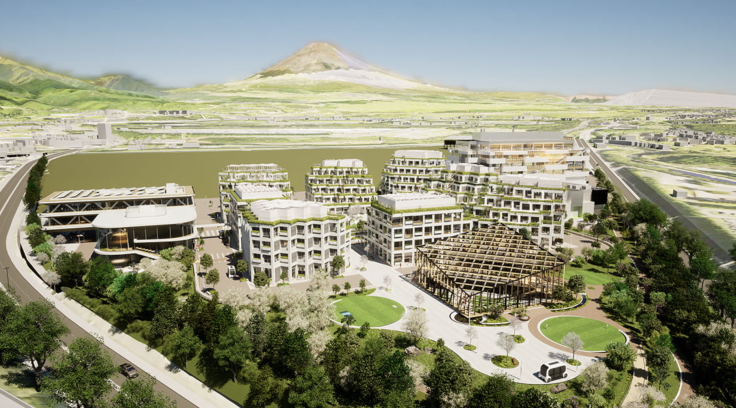
A highly automated utopia is preparing for residents to move in as part of a "mass experiment" at the foot of the iconic Mount Fuji, Japan. The place, called Woven City, has been under construction since 2021, with major car brand Toyota as the major proponent.
The futuristic city will serve as a "living laboratory" for Toyota to test its self-driving, sustainable E-palette vehicles. To gather data on how people move around the city, the first 2,000 residents are expected to arrive by year's end as part of an £8 billion initiative.
Upon arrival at Woven City, participants will be assigned new "smart homes" powered primarily by hydrogen, making the city highly eco-friendly. Toyota boss Akio Toyoda divulged some key details about the fascinating robo-town.
Toyoda explained how each residence would be equipped with solar-panelled rooftops and AI technology for in-home health monitoring. Additionally, a report by The Sun suggests all vehicles and buildings will be interconnected through a network of data and sensors.
Woven City: A High-Tech Utopia in the Making
Woven City's houses, constructed primarily from wood, will incorporate in-home robotics to assist with daily living, promoting resident independence. Building a complete city from the ground up, even on a small scale like this, is a unique opportunity to develop future technologies," the President said.
This interconnected environment, where people, buildings, and vehicles communicate through a network of data and sensors, serves as a real-world testing ground for connected AI technology.
By analysing data from both physical interactions and simulated scenarios, researchers can maximise the potential of this technology. Woven City's streets will be segregated into three distinct zones:
- Pedestrian-only areas
- High-speed roads for autonomous vehicles
- Promenades for slower micro-mobility options like bikes and scooters

Woven City will also prioritise zero-emission vehicles. However, the city will also provide accessible transportation options, including special vehicles for those with limited mobility needs and support for wheelchair users.
Released blueprints showcase Woven City's innovative design, featuring a grid-like layout interwoven with natural open spaces to foster social interaction. Toyota partnered with the renowned architectural firm BIG (Bjarke Ingels Group) to design Woven City. BIG is known for its innovative projects, including the Two World Trade Centers, the Lego House in Denmark, and Google's headquarters in Mountain View.
The design company's founder, Danish architect Bjarke Ingels, said: "Technologies are beginning to change how we inhabit and navigate our cities radically. Connected, autonomous, emission-free and shared mobility solutions are bound to unleash opportunities for new forms of urban life."
A Glimpse into the Future of Urban Living

A diverse group, including families, retired couples, retailers, and scientists, are expected to arrive by year's end. This initial group will pave the way for future residents to join this unique urban experiment.
This living laboratory is situated at the base of Mount Fuji, an iconic volcano that last erupted over 300 years ago.
While Mount Fuji, which received free Wi-Fi in 2015, is technically classified as an active volcano, its last eruption occurred over 300 years ago. Volcanologists closely monitor the mountain, and evacuation plans are in place for various scenarios.
Government data suggests an eruption could result in ash fall and impact surrounding areas. However, evacuation plans are in place to manage such scenarios.
Professor Toshitsugu Fujii of the University of Tokyo points to the 300-year gap since Mount Fuji's last eruption (the Hoei eruption) as a possible indicator of ongoing magma buildup. He emphasises that future eruptions are not out of the question.
While safety is paramount, big tech firms are actively exploring ways for humans and robots to work together. In February, a report indicated that Microsoft and OpenAI are planning to invest in humanoid robotics startup Figure AI, which aims to develop robots to tackle tasks considered hazardous for humans.







